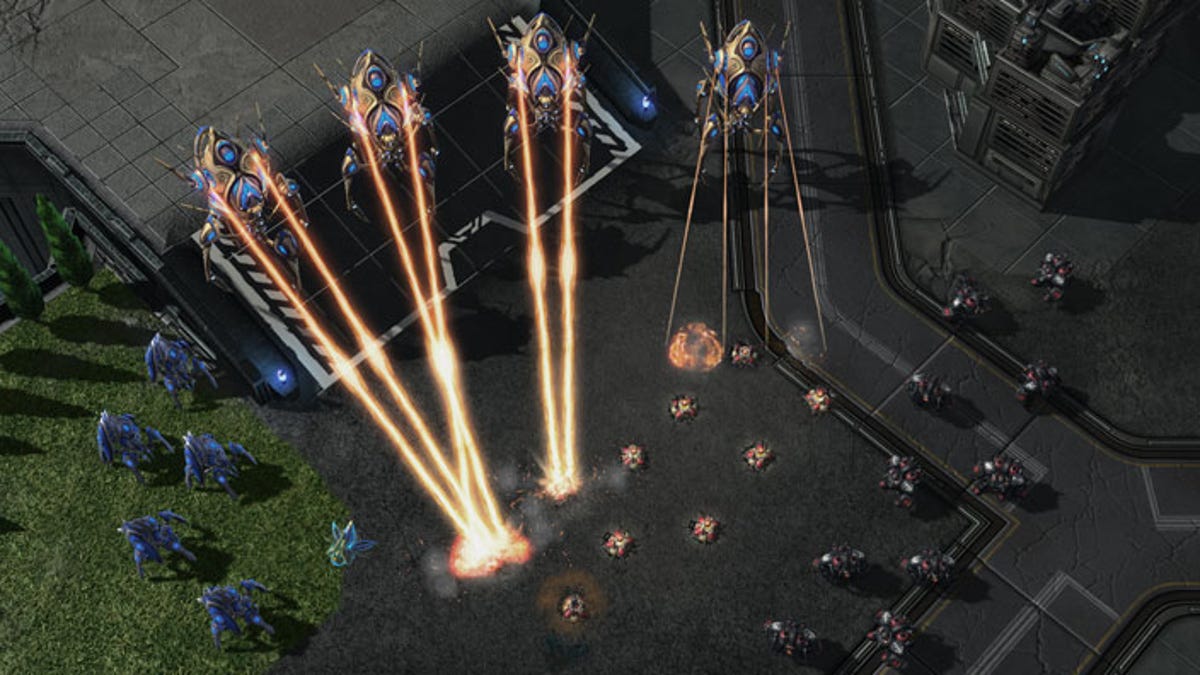Study: 40 hours of complex StarCraft is good for the brain
Complicated real-time strategy game situations, researchers say, can boost cognitive flexibility -- the ability to allocate the brain's resources under changing circumstances.

Playing 40 hours or Starcraft, the real-time strategy game pitting humans and two alien species against each other, can make people think more flexibly.
So concludes a study this month that compared groups of people who played The Sims, StarCraft with easier conditions, and StarCraft with harder conditions that required players to keep track of a more complicated scenario.
"Real-time strategy gaming selectively promotes cognitive flexibility, particularly under conditions in which players must rapidly switch between contexts while maintaining memory for both contexts," concluded authors Brian D. Glass of the University of London, W. Todd Maddox of the University of Texas at Austin, and Bradley C. Love of University College London. "Cognitive flexibility is a trainable skill."
Cognitive flexibility essentially is the ability to direct your brain's resources appropriately under changing decision-making circumstances, and it "has been associated with fluid intelligence and overall psychological well-being," the authors said. In contrast, earlier studies involving first-person kill-or-be-killed games have shown videogaming benefits only with lower-level aspects of thinking such as visual information processing, they said.
The debate about whether video games are good for people remains deeply unsettled. Even if some brain functions are improved, there are still broad issues about violence, long-term concentration abilities, and electronic interactions taking the place of real-world interactions with people. Given the complexity of brains and games, it would be foolish to expect a simple answer to these questions -- indeed, as games transform from solitary pursuits into social activities, expect even more complexity.
The study compared subjects playing three game scenarios: Electronic Arts' The Sims, a social game; Blizzard Entertainment's StarCraft with one military base to manage and one enemy; and StarCraft with two bases and two enemies. The two StarCraft scenarios were designed to be equally difficult, but the second scenario required the player to keep track of circumstances that weren't in view (the researchers configured StarCraft so its mini-map wasn't visible). Curiously, all the test subjects were female "due to the small number of non-gaming males" among University of Texas-Austin undergraduates who responded to ads to participate.
The researchers tracked the number of gameplay features, such as whether a player's unit was being attacked, taking measurements every quarter second. The study found that those playing the more complex StarCraft scenario kept track of more of these features, and paid attention to them for longer.
"Those in the [more complex] SC-2 subcondition utilized more game state features than those in the SC-1 subcondition," the researchers said. "This result supports the notion that the within-StarCraft gaming manipulation led SC-2 participants to manage more information sources during game play, thus leading to enhancements in cognitive flexibility."
The study's funding came from the Air Force Office of Scientific Research, Army Research Laboratory, and National Institutes of Health.
(Via the Wall Street Journal)

